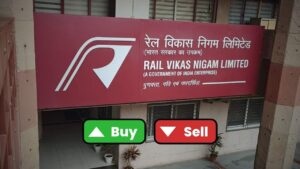As systems become more complex and distributed, it becomes more difficult to predict and mitigate service degradation. This is where intelligent automation, which makes use of Large Language Models (LLMs) and observability data, comes into play, providing a proactive approach to maintaining system health and optimizing operational efficiency. Securing seamless service reliability is a top priority for businesses in today’s hyper-connected digital landscape.
An expert in this area, Hariprasad Sivaraman has made great progress in integrating LLMs with observability data to anticipate and resolve service degradation. By fusing structured telemetry data with natural language understanding, Sivaraman’s work has shown how intelligent automation can revolutionize site reliability engineering (SRE) procedures and reshape industry standards for service reliability.
The original idea behind this innovative approach was published in a peer-reviewed journal, the International Journal of Core Engineering & Management .
The development of a theoretical framework that combines LLMs with observability data, allowing organizations to move from reactive troubleshooting to proactive maintenance, is one of Hariprasad Sivaraman’s major accomplishments. His research demonstrates innovative applications of LLMs in analyzing unstructured data, such as logs and traces, to bridge the gap between traditional monitoring systems and sophisticated machine learning models.
At an industry level, Sivaraman’s contributions have laid a foundation for organizations to adopt similar frameworks across critical sectors. His innovations are particularly relevant for industries like healthcare, where system reliability can save lives, and finance, where uninterrupted service availability protects global economic stability. By setting a benchmark for integrating intelligent automation into DevOps workflows, Sivaraman’s work has the potential to inspire industry-wide adoption and elevate service reliability standards.
Practically speaking, Sivaraman oversaw the creation of an intelligent automation system for a cybersecurity product that served 260 clients and brought in $30 million annually. This system decreased downtime by 30%, improved the speed at which degradation was detected by 40%, and automated 20 hours of work per week for the operations team. These achievements not only guaranteed 99.9% uptime compliance but also safeguarded revenue streams and bolstered customer confidence.
Sivaraman’s work has had a significant impact on his company and the industry at large. He used observability data, such as metrics, logs, and traces, to build scalable frameworks that can handle the complexity of multi-service and hybrid cloud environments. His predictive models have shown the potential for significant operational overhead cost savings, reduced false positives by 30%, and improved detection accuracy by 25%.
The path to these outcomes was not without its difficulties. Sivaraman overcame these problems by creating unified pipelines that aggregate and correlate various observability datasets. His use of automated threshold adjustments reduced alert fatigue, and his predictive maintenance frameworks allowed proactive remediation of potential degradations, preventing cascading failures. Other challenges included fragmented observability data, excessive noise in monitoring alerts, and the inherent complexity of multi-service architectures.
Sivaraman addressed these challenges with innovative solutions. For instance, he utilized a Kafka-based message broker to unify fragmented observability data, enabling real-time indexing in ElasticSearch and actionable insights via Grafana dashboards. For excessive alert noise, Sivaraman implemented automated threshold adjustments tied to contextual metadata, significantly reducing alert fatigue and improving the efficiency of incident responses.
Moreover, his theoretical exploration of LLM integration has opened new avenues for analyzing unstructured data, such as logs and traces, to extract actionable insights. This approach has set the stage for the next generation of observability systems, capable of predicting service degradation with greater accuracy.
These developments highlight the importance of incorporating intelligent automation into DevOps workflows, opening the door for more dependable and efficient service delivery. At the organizational level, his efforts have produced observable benefits, including an estimated $200,000–$300,000 in annual cost savings and a 40% improvement in incident resolution times.
Beyond cost savings, Sivaraman’s work has improved team productivity and customer satisfaction. By automating routine operational tasks and significantly reducing downtime, his frameworks have enabled engineering teams to focus on higher-priority initiatives, driving innovation and ensuring superior service delivery.
Advanced observability systems and AI-driven analytics will come together to form the future of intelligent automation. As Sivaraman’s research indicates, LLMs have enormous potential to improve predictive accuracy and lower false positives by fusing structured metrics with natural language understanding. These models can identify patterns and correlations that conventional approaches frequently overlook.
Furthermore, as observability platforms develop, deeper integration of behavioral analytics, federated learning, and cross-environment data correlation will be made possible. These developments will enable organizations to track and anticipate problems in systems that are becoming more complex, such as hybrid environments and multi-cloud architectures.
Operational efficiency will also reach new heights with autonomous systems capable of self-healing and dynamic resource scaling. By investing in unified observability and predictive automation, businesses can build resilient infrastructures that adapt to evolving demands and ensure uninterrupted service availability.
The transformative potential of integrating LLMs with observability data is exemplified by Hariprasad Sivaraman’s contributions to intelligent automation and service degradation prediction. His work has not only addressed important issues in SRE practices but has also established a roadmap for future advancements in the field. As he aptly states, “The key to achieving resilient, self-healing systems lies in combining intelligent automation with proactive observability, enabling organizations to stay ahead of service disruptions and deliver exceptional user experiences.”












